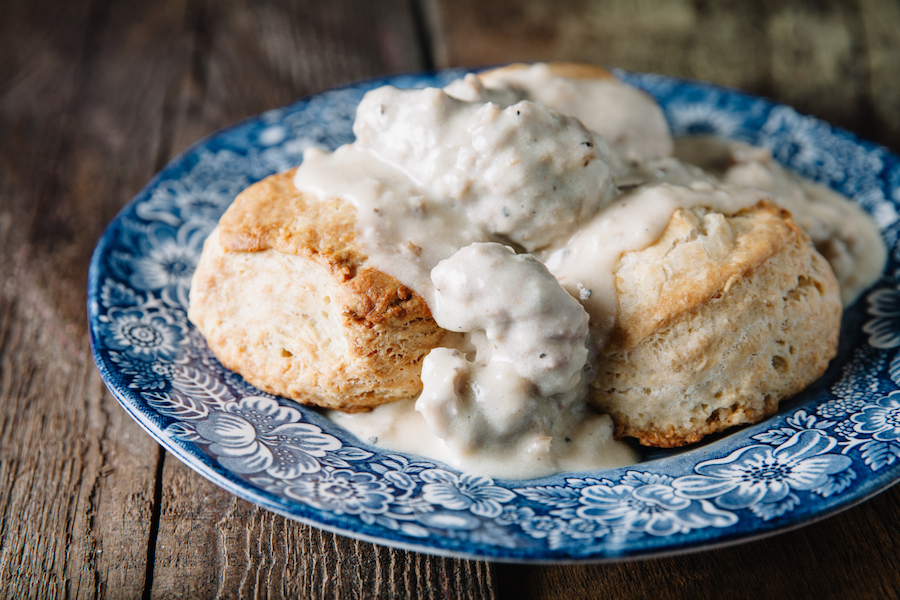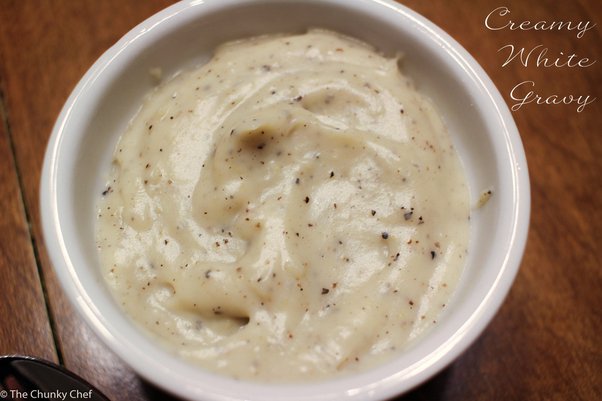Gravy itself isn’t inherently bad for you, but it can be high in fat, sodium, and calories depending on how it’s prepared. Gravy is often made by thickening meat drippings or stock with flour, which can increase its calorie content. Additionally, commercially prepared or packaged gravies may contain additives, preservatives, and high amounts of sodium to enhance flavor and shelf life.
Consuming excessive amounts of gravy, especially if it’s high in fat and sodium, can contribute to health issues like weight gain, high blood pressure, and heart problems. However, enjoying gravy in moderation as part of a balanced diet is generally fine for most people. Choosing homemade gravies with less fat or using healthier ingredients can make it a better choice.
If you’re concerned about the health impact of gravy, consider making it with leaner ingredients, reducing added fats, using low-sodium broth, or exploring alternative recipes to make it healthier.
How does gravy’s nutritional profile impact health?

The nutritional breakdown of gravy helps individuals make informed choices about their consumption and consider healthier preparation methods to minimize potential health risks.
Caloric content and macronutrient breakdown
Gravy’s caloric content varies based on its ingredients and preparation methods. It often contains fats, carbohydrates, and proteins. On average, a serving of gravy (around 1/4 cup) can have approximately 30-50 calories, but this can significantly increase depending on the amount of fat and flour used for thickening.
Macronutrient breakdown
- Fats: Gravy can be high in fat, primarily from meat drippings, butter, or oil used in its preparation. These fats contribute to its flavor and texture. Depending on the recipe, gravy may contain saturated and trans fats, which can impact cholesterol levels.
- Carbohydrates: Gravy often contains carbohydrates from flour used as a thickening agent. This contributes to its texture and consistency.
- Proteins: Gravy might contain proteins from meat drippings or added ingredients like broth. However, the protein content is usually minimal compared to other macronutrients.
Fat, sodium, and cholesterol levels in typical gravy recipes
- Fat content: Gravy’s fat content can be significant, especially in recipes using pan drippings or added fats like butter or oil. Saturated and trans fats from animal products or added fats can contribute to increased cholesterol levels when consumed excessively.
- Sodium: Gravy can be high in sodium, especially commercially prepared versions. This is due to added salt, flavor enhancers, or bouillon used in the preparation process. High sodium intake can lead to elevated blood pressure and other health issues.
- Cholesterol: Gravy made from animal fats or meat drippings can contain cholesterol. Excessive consumption of cholesterol-rich foods may contribute to cardiovascular problems.
Comparison of homemade vs. commercially prepared gravy
Allows for more control over ingredients and can be made with healthier options like low-sodium broth, leaner meat drippings, and less added fat. This may result in a gravy with lower fat, sodium, and calorie content compared to commercial varieties.
Often contains higher levels of sodium, preservatives, and additives to enhance flavor and extend shelf life. These additives might have health implications when consumed frequently and in large quantities.
What are the health effects of consuming gravy?

These health impacts associated with gravy consumption can help individuals make informed choices about their dietary habits.
Effects of high-fat content on health
High-fat content in gravy, especially saturated and trans fats from meat drippings, butter, or added oils, can contribute to health issues.
Excessive consumption of high-fat foods can lead to weight gain, increased cholesterol levels, and a higher risk of heart disease.
Saturated fats can raise LDL (bad) cholesterol levels in the blood, contributing to atherosclerosis and cardiovascular problems.
Impact of sodium levels on blood pressure and cardiovascular health
Gravy, particularly commercially prepared versions, tends to have high sodium content due to added salt and flavor enhancers.
High sodium intake is linked to elevated blood pressure, increasing the risk of stroke, heart disease, and kidney problems.
Excessive sodium consumption can lead to fluid retention and strain on the heart and blood vessels.
Consideration of additives and preservatives in commercial gravies
Many commercially prepared gravies contain additives, preservatives, and flavor enhancers to improve taste and prolong shelf life.
Additives like monosodium glutamate (MSG), artificial colors, and preservatives may cause adverse reactions in sensitive individuals, including headaches or allergic responses.
Long-term consumption of foods containing certain additives might have health implications, though research on their specific effects is ongoing.
How can one moderate gravy intake and opt for healthier choices?
Employing these moderation strategies and opting for healthier ingredient choices and cooking methods can help individuals enjoy gravy as part of their meals while reducing its potential negative health impacts.
Importance of portion control and moderation in gravy consumption
Portion control is crucial when consuming gravy due to its potential high-fat and high-sodium content. Limiting portion sizes helps manage caloric intake and reduces the consumption of fats, sodium, and other potentially unhealthy components.
Moderation in gravy consumption allows individuals to enjoy its flavor without overindulging in its less healthy aspects.
Healthier ingredient alternatives and cooking methods
Consider using low-sodium broth, leaner cuts of meat for drippings, and reducing added fats like butter or oil. Thickening with cornstarch or arrowroot powder instead of flour can also lower carbohydrate content.
Roasting meat on a rack can reduce the amount of fat in drippings used for gravy. Skimming off excess fat from the drippings before making gravy can further reduce fat content.
Tips for making healthier homemade gravy
Use homemade broth or low-sodium store-bought options to control sodium levels.
Refrigerate homemade gravy before use to easily remove solidified fat from the surface.
Consider adding flavor with herbs, spices, and aromatics instead of relying solely on added fats or sodium.
Opt for thickening agents like cornstarch, arrowroot powder, or pureed vegetables to achieve desired consistency without excessive fat or carbohydrates.
Experiment with alternative ingredients such as mushrooms, onions, or roasted garlic for added flavor without extra fat.
FAQ’s
Is gravy salt bad for you?
Excessive salt in gravy can be harmful as it contributes to increased sodium intake, potentially leading to health issues like high blood pressure.
Why is gravy high risk?
Gravy can be high risk due to its potential high levels of fat, sodium, and calories, which, when consumed in excess, can contribute to health problems like weight gain and cardiovascular issues.
Is gravy bad for the heart?
Gravy high in saturated fats and sodium can negatively impact heart health when consumed in large quantities over time, potentially contributing to heart disease and related issues.
What is the healthiest sauce?
Tomato-based sauces or homemade sauces using fresh herbs, spices, and healthy oils like olive oil are often considered healthier choices compared to high-fat or high-sodium sauces like some gravies.
Is gravy full of sugar?
Gravy typically doesn’t contain a significant amount of sugar unless sweeteners are added for flavor, but its primary concerns often revolve around high fat and sodium content.
What kills salt in gravy?
Balancing excess salt in gravy can be done by dilution with additional unsalted liquids like low-sodium broth or water, adjusting the overall volume of the gravy while maintaining flavor.
Final Words
When it comes to gravy, it’s all about balance and making smart choices. Gravy isn’t necessarily “bad” for you, but it can have high levels of fats, sodium, and calories if not consumed in moderation. Being mindful of portion sizes and how often it’s eaten is essential.
Homemade gravy made with healthier ingredients and cooking methods can be a better option compared to store-bought varieties that might contain more additives and preservatives. Remember, moderation is key!

